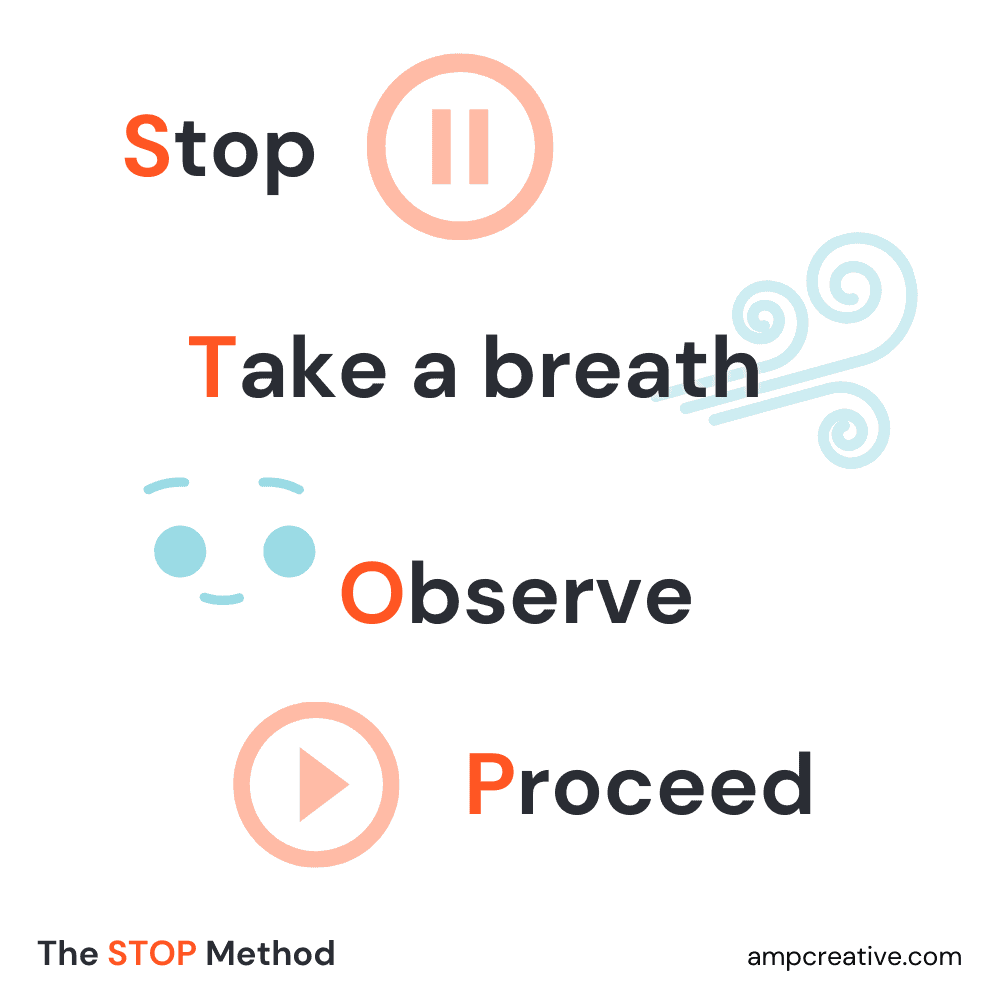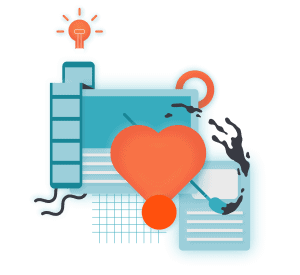What is mindfulness, and how can it protect against cybercrime?
Many companies deploy security training for their employees, focusing on teaching them to recognize threats and follow policy. However, most modern cybersecurity training overlooks a powerful tool for responding to the psychological manipulation cybercriminals employ: mindfulness.
What is mindfulness?
Mindfulness is a moment-to-moment state of awareness of one’s surroundings and sensations.
It involves acknowledging the experience that you are having in a given moment without judgment or reaction. Mindfulness has been used as an intentional practice for thousands of years, particularly in Eastern spiritualities such as Buddhism, Hinduism, and the ancient Indian practice of yoga.
It was popularized in the West in the 1970s by the Vietnamese Buddhist monk Thich Nhat Hanh, as well as molecular biologist Jon Kabat-Zinn, who adapted mindfulness as a method for stress reduction. Kabat-Zinn developed scientific practices to treat a variety of health issues. He has since become a leading advocate for the power of what he calls “paying attention, on purpose.”
Research by Kabat-Zinn and others has found that regular mindfulness practice can:
- improve focus and mental clarity
- reduce mind-wandering
- boost mental health and heart health
- provide valuable treatment for depression, anxiety, anger, PTSD, and more
The benefits of mindfulness are easily applied to the workplace, too. Stress, distraction, and difficulty focusing hamper our ability to do our jobs with efficiency, integrity, and fulfilment.
Mindfulness and cybersecurity
When it comes to defending against cybersecurity threats at work, mindfulness practices can be your team’s most reliable firewall.
These techniques keep your brain tuned in – and keeps would-be cybercriminals out. As you’ll learn below, your people are the best firewall for data-breach prevention.
These days, everyone wants a piece of your brain. In the 1970s, economist and Nobel Laureate Herbert A. Simon first coined the term “the attention economy” to describe the ever-more chaotic landscape of focus-grabbing entertainment, media, and information.
a wealth of information creates a poverty of attention.
That inability to pay attention is the natural response of our overwhelmed brains. To process information coming from many sources, our brains shift from executive function (careful, well-planned decision-making in the prefrontal cortex) to reactive function (fight-or-flight, instinct-driven decision-making in the limbic system).
When this happens, we are especially vulnerable to making mistakes by rushing to act, or missing critical information.
Mindfulness practices, however, can interrupt that information overload and help to resettle our brains. Taking the time to slow down, get back in touch with your breathing and your body can make all the difference between impulsively clicking a suspicious link, forwarding an email, responding to a text, and recognizing it as a cyber threat. This is because you are taking a moment to become grounded, which gives you the space to assess the situation instead of immediately reacting to it.
Mindfulness techniques for the workplace
So, what kinds of mindfulness techniques can we practice in the workplace?
As it turns out, you don’t need a 10-day retreat to use mindfulness practices. These simple techniques can quickly help you reconnect your brain, body, and breath before reacting.
Deep Breathing Exercise (30 to 60 seconds)
Did you know that deep breathing can make you a better communicator? It’s true!
Take a few deep breaths before sending an email or making a phone call. It’s a simple but effective way to slow down, take note of your emotions, and make sure you’re conveying your message the right way.
This same technique can help interrupt the impulsive actions that phishing attacks hope to inspire.

Before you click on a link or hand over sensitive company data, taking some deep breaths can soothe your amygdala – the source of stress hormones – and put your more rational and methodical prefrontal cortex back in charge.
To employ this technique:
- Pause before sending or responding to emails, text messages, or chats, or acting on the instructions you receive in a suspicious message.
- Take a long, deep breath in through the nose, hold it for a moment, and exhale slowly and fully through the mouth, letting all the air exit your lungs.
- Reflect on the message you’re about to send, or the instructions you’ve received, carefully reviewing all the information.
- Take another deep breath in, hold for a moment, and exhale slowly and fully.
- Decide whether to make changes, send, or act.
Body Scan Practice (3-4 Minutes)
Have a little more time? Utilize this technique for awareness and assessment.
In today’s competitive society, we’re often encouraged to ignore discomfort and to push forward at any cost. But discomfort is our body’s way of telling us to do the opposite. Discomfort has something to teach us, but only if we tune in and listen to ourselves.
A body scan is a technique to mindfully take note of what one is feeling in your body at any given moment. Since phishing scams attempt to hijack your body’s ultra-reactive limbic system, a panicky fight-or-flight feeling can be an indication that something’s not right.
A simple body scan can help you tune in to that sensation and trust that your body is trying to tell you something important.
How to practice this technique:
- Settle into a comfortable position, sitting or lying down, whatever feels right. Close your eyes or soften your gaze.
- Take in a few deep breaths through the nose, exhaling through the mouth.
- Allow your awareness to focus on the sensations of your feet. Take note of the temperature and weight; softly notice the points of contact that your feet make with each other, your shoes, the floor.
- When thoughts enter your mind, simply take note of them without judgment, and gently allow them to pass.
- Travel that same soft awareness up to your legs. Check in with your ankles and knees; gently take note of any areas of tension.
- Taking deep, steady breaths
,allow your awareness to travel up through the sitting bones to the lower back and into the belly, and slowly up the back to the neck and shoulders. Check in with each part of your body, gently noting each sensation, while continuing to breathe deeply. - As your awareness reaches your head, invite a sense of softness, relaxing your facial muscles, eyes, and jaw.
- To complete your body scan, allow your awareness to settle into your chest and your breathing. Note the gentle rising and falling of your chest as you breathe in and out. You may find it helpful to rest your hands on your chest, feeling the beat of your heart as you breathe.
- When you feel ready, slowly open your eyes, or refocus your gaze, and gently bring your attention back to the world beyond your body.
The STOP Method
For a good mindfulness reminder, remember the acronym S.T.O.P. The STOP practice is so impactful because it is easy to remember and can be practiced anywhere.

- S stands for stop.
So, stop doing whatever you are doing. - T stands for take a breath.
Take a breath in through your nose and exhale through your mouth. Note the warmth or coolness of your breath on the skin, the gentle rising of your chest, and extension of your belly as you take a deep breath in and then exhale. - O is for observe.
Here you want to observe what is happening in your body. What are you feeling and where are you feeling it? Then move to your thoughts. Non-judgmentally observe the thoughts that are naturally occurring. Think of yourself as the protagonist in your own movie and you are the observer. Watch your thoughts roll past like frames in a movie reel. - P is for proceed.
You are able to proceed with your next move having given your brain the space to choose a better action. Viktor Frankl reminds us that “Between stimulus and response there is a space. In that space is our power to choose our response. In our response lies our growth and our freedom.”
You might consider posting signs with this gentle reminder around the office, to encourage team members to take that extra breath before responding or making impulsive decisions. Oftentimes, a simple breath can make all the difference in halting a major security breech at your company to avoid loss.
Introduce mindfulness at your workplace
As Jon Kabat-Zinn found in his work with stress reduction and holistic care, mindfulness practices can have benefits in every aspect of our lives.
Incorporating techniques like these in your professional life can help you reduce stress, improve focus and mental clarity, and feel a stronger connection between your body and mind. Mindfulness practices transform holistically; they harmonize the mind with the body and the heart.
The next time you’re at work and feeling overwhelmed by information overload, take a few minutes to realign your mind and body by practicing mindfulness. That way, when cybercriminals land in your inbox, seeking to hijack your brain to achieve their goals, you’ll be calm, aware, and fully prepared: paying attention, on purpose. And remembering to S.T.O.P.
Interested in strengthening your team with mindfulness training? Reach out to AMP today to learn more.
Featured image by Christina Morillo
















